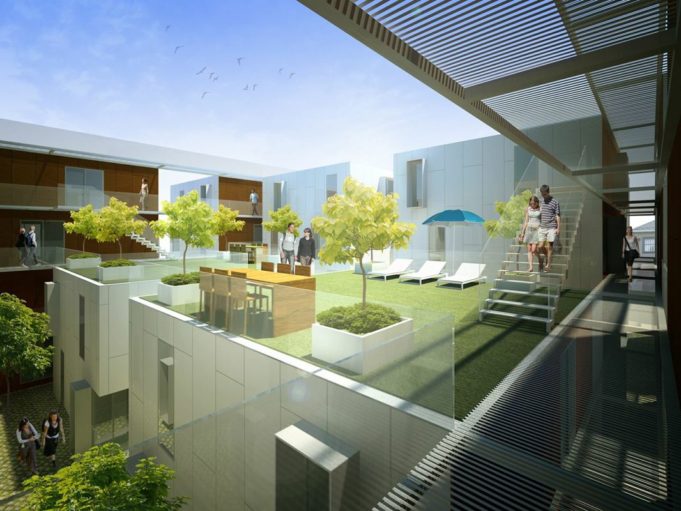With a tip of the hat to Monty Python… (Photo: stok.com)
Architects and town planners. We know what they do. Now there’s the “placemaker”. It’s a new, philosophical, people-driven approach to urban development, in conjunction with architecture and landscaping. Placemakers decide what a new residential or commercial project needs, at ground level. So, they don’t just design fancy buildings. They design communities and there is a lot more to it than just planting a few trees and photoshopping pretty sales-renderings.
Placemaking isn’t new but it is a buzz word we’ll see more as we check out off-the-plan real estate. Designing public-use spaces, from retail to social, which make sense for the broader community, is considered both an art and a science. Gilbert Rouchecouste is the managing director and founder of Melbourne-based placemaker firm Village Well. He says property developers were waking up to the importance of placemaking.
“Having an indoor theatre and a virtual golf range ain’t going to do it anymore,” he said. “The most loved placemaking places are pre-1945. They are built with a level of humaneness around them, shop fronts being close to human connection, and (the idea of) smaller is beautiful. These environments are really central to the human condition and wellbeing. Placemaking now is becoming more sophisticated. As people travel, they are more lifestyle focused, and on public amenity of civic and cultural services.
Sterling Global’s head of investment and development, Mark van Miltenburg, said placemaking was derived from “a premise that there is more to cities than very tall buildings”, and will be part of the developer’s future projects. Melbourne-based architect, DKO principal Koos de Keijzer said placemaking was far more nuanced than incorporating a ground-floor cafe into a property development. “We do a lot of large-scale communities – 1000 or 2000 dwellings – and in the last 10 or 15 years, clients, urban designers and architects have realised you cannot just build a community out of houses, streets and parks, you actually need to have quite a strong social aspect to it,” de Keijzer said.
“By breaking up bigger buildings into a series of smaller buildings, you really start to foster this strong sense of community. It is all about trying to stifle that anonymity of those spaces and buildings that are not public. Making lobbies places where people can recreate and meet others … they are really important things. It is not as simple as putting a cafe down the bottom (of a development). That is helpful in some sense, but what we are interested in is the non-commercialisation of it, such as community gardens.”
We are seeing more ‘placemaking’ in some of the newer, larger condo developments around Thailand now as the idea of building communities, rather than just 32 sqm boxes, becomes more desirable for buyers.
Source: domain.com.au





























